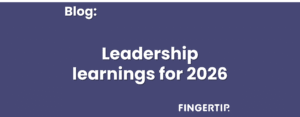Holidays are a great chance to relax and to reflect the past year’s highlights. Did you learn a new skill? Has your career maybe taken a new turn?
From our perspective this year has been quite a handful: Adjusting to the post-pandemic business world has given us many opportunities to spar with leaders struggling in the new normal. As an early present, we thought it could be useful to share some of those here:
1. The physical office will be forever changed. Very few companies invited their companies completely back to the office (with an notable counter-example from Twitter). Instead, most decided to double down and continue offering remote opportunities. This also changes the role of the physical office, because you can’t expect to find your co-workers there. Companies need to figure out new ways to re-recruit people to the office by inventing new ways it can support their needs.
2. Supporting hybrid work is the main task. The remote boom isn’t going away, and companies need to adapt to hybrid work. Harvard Business Review lists the 5 main hybrid work challenges as such: Communication, Coordination, Connection, Creativity and Culture. There’s also Productivity Paranoia: leader’s don’t trust the self-reported productivity of their employees. Making work transparent, accountable, documented and collaborative with digital leadership is an easy way to start.
3. Survival mode engaged. The upcoming year will not be easy for many companies. The economy will prove that only the most resilient and adaptable companies can keep afloat. You need to read the situation correctly, and react fast with impactful decisions. Indecisiveness can be deadly. Digital leadership offers a way to create common understanding, bring more brain power to decision making scenarios and add a feedback loop in the decision making process to promote learning.
4. De-centralization is the cheat code to productivity. Companies embrace employee experience not only by remote working, but also de-centralized leadership. It reduces reporting and allows people to work when and where they want, which promotes creativity. Synchronization is more efficient in well prepared meetings and workshops, which focus more on adding value than sharing information. Allowing freedom and sharing power using digital leadership still keeps leaders in the loop, and can help your productivity to skyrocket.
5. Scenario thinking enhances strategic work. Implementing decisions and going through with new experiments is scary, but necessary. Scenario thinking helps figure out the potential outcomes of different actions, even inaction and uncovers underlying assumptions in your business strategy. This helps reduce biases and fear in decision making and execution, and makes you more prepared for surprises in your path.
We hope these 5 learnings give you some food for thought, and can help you navigate the beginning of next year with success. Let us know if you’d be interested in using Fingertip to achieve all your digital leadership goals in 2023! We’d be honored to help.




